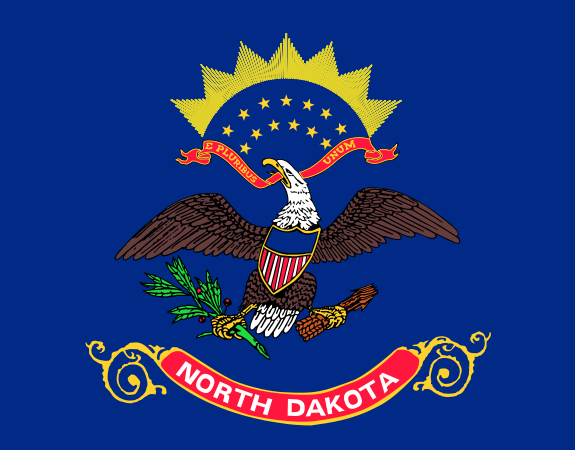|

Trails to the Past of North Dakota is excepting any donations of genealogy materials that you may have such as marriage announcements, news articles, old obituaries, births, (you do not need the birth certificate) just the information, and biographies. If you have any of these items please contact me Marie Miller the North Dakota State Administrator.
For those that are interested this site is listed on Facebook under North Dakota Trails to the Past. It is a group that you can join.
History Of North Dakota
Much of present-day North Dakota was included in the Louisiana Purchase of 1803. Much of acquired land was organized into Minnesota and Nebraska Territories. Dakota Territory, making up present-day North and South Dakota, along with parts of present-day Wyoming and Montana, was organized on March 2, 1861. Dakota Territory was settled sparsely until the late 1800s, when the railroads entered the region and aggressively marketed the land. A bill for statehood for North Dakota, South Dakota, Montana, and Washington titled the Enabling Act of 1889 was passed on February 22, 1889 during the administration of Grover Cleveland. After Cleveland left office, it was left to his successor, Benjamin Harrison, to sign proclamations formally admitting North and South Dakota to the Union on November 2, 1889.The rivalry between the two new states presented a dilemma of which was to be admitted first. Harrison directed Secretary of State James G. Blaine to shuffle the papers and obscure from him which he was signing first and the actual order went unrecorded. However, since North Dakota alphabetically appears before South Dakota, its proclamation was published first in the Statutes At Large. Since that day, it has become common to list the Dakotas alphabetically and thus North Dakota is usually listed as the 39th state. It is believed that nobody recorded which paper was signed first, thus nobody can actually know which of the Dakotas was admitted first. Bismarck is the state Capitol of North Dakota.
A round of federal construction projects began in the 1950s including the Garrison Dam, and the Minot and Grand Forks Air Force bases. There was a boom in oil exploration in western North Dakota in the 1980s, as rising petroleum prices made development profitable. The original North Dakota State Capitol burned to the ground on December 28, 1930, and was replaced by a limestone faced art deco skyscraper that still stands today.
State Governors
North Dakota Veterans
Photographs
State News Items
For those that are interested this site is listed on Facebook under North Dakota Trails to the Past. It is a group that you can join.
The information on Trails to
the Past © Copyright may be used in personal
family history research, with source citation. The pages
in entirety may not be duplicated for publication in any
fashion without the permission of the owner. Commercial
use of any material on this site is not permitted.
Please respect the wishes of those who have contributed
their time and efforts to make this free site
possible.~Thank
you! |



